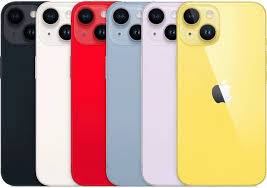**Apple Pulls iPhone SE and iPhone 14 from Stores in the EU**
Apple has made a bold decision to remove two of its popular devices, the iPhone SE and iPhone 14, from its retail and online stores in the European Union. The move comes in response to new EU regulations regarding technology and environmental sustainability, sparking a mix of surprise, debate, and speculation among consumers and industry experts.
### **The EU’s Stricter Technology Regulations**
This decision is primarily driven by the European Union’s updated technology policies, which aim to standardize charging ports, reduce e-waste, and encourage the production of more sustainable electronic devices. One of the most notable regulations, which comes into effect in 2024, mandates that all mobile phones, tablets, and other portable devices sold within the EU must adopt USB-C as a universal charging standard.
While Apple has already introduced USB-C ports in its latest devices, including the iPhone 15 lineup, the iPhone SE and iPhone 14 models still rely on Apple’s proprietary Lightning port. This makes these devices non-compliant with the new regulations, forcing the company to phase them out from EU markets.
### **Why the iPhone SE and iPhone 14?**
The iPhone SE, known for its compact size and affordability, has been a popular choice for users seeking Apple’s ecosystem at a lower price point. Similarly, the iPhone 14, though no longer the newest flagship model, remains a sought-after device due to its advanced features and lower price compared to the iPhone 15 series.
However, both models are equipped with Lightning charging ports, which are now considered obsolete under EU regulations. Upgrading these models with USB-C ports would require significant redesigns, which Apple appears unwilling to undertake given the company’s focus on newer models.
### **Apple’s Strategic Decision**
Apple’s move to pull these devices instead of retrofitting them for compliance underscores the company’s forward-looking strategy. By discontinuing older models, Apple can streamline its product lineup and focus on devices that align with global regulatory trends.
An industry analyst noted, “Apple’s decision is not surprising. The company has always been quick to pivot when faced with regulatory changes. This move allows Apple to avoid potential fines and maintain its reputation as a leader in innovation and compliance.â€
The decision also reflects Apple’s broader commitment to sustainability. By phasing out non-compliant devices, the company avoids producing new batches of outdated models, thus reducing its environmental footprint.
### **Impact on Consumers**
The removal of the iPhone SE and iPhone 14 from the EU market will have varying implications for consumers.
1. **Affordability Concerns**:
The iPhone SE has been a budget-friendly option for many. Its absence could limit choices for users seeking affordable entry into the Apple ecosystem. The iPhone 14, while pricier, offered a mid-range alternative to Apple’s flagship devices.
2. **Second-Hand Market Growth**:
With these models no longer available in stores, demand in the second-hand market is likely to surge. However, buyers should be aware that non-compliant devices might not qualify for software updates or support in the future.
3. **Adoption of Newer Models**:
Apple’s decision may encourage more consumers to adopt newer models like the iPhone 15 series, which comply with EU regulations and offer improved features. However, the higher price tags could deter some buyers.
### **Reactions from the Industry and Public**
Apple’s decision has elicited mixed reactions. Environmental advocates have praised the move, viewing it as a step toward reducing e-waste and promoting sustainable practices. The EU Commission has also welcomed the decision, emphasizing the importance of the new regulations in fostering a more sustainable tech ecosystem.
However, some consumers and critics argue that Apple’s decision to discontinue these models rather than update them with USB-C ports highlights the company’s focus on profit over customer accessibility.
One long-time Apple user expressed frustration: “I’ve been using the iPhone SE for years because it’s affordable and works perfectly for my needs. Now I’m forced to either pay more for a newer model or switch to another brand.â€
### **What’s Next for Apple?**
Apple’s decision to phase out the iPhone SE and iPhone 14 signals a shift in its product strategy. Moving forward, the company is likely to focus on developing devices that not only comply with regulatory standards but also align with its sustainability goals.
The introduction of USB-C ports in the iPhone 15 series indicates that Apple is embracing standardization, which could improve interoperability and convenience for users. This shift also positions Apple to compete more effectively in markets where USB-C has become the norm.
### **Broader Implications for the Tech Industry**
Apple’s response to the EU’s regulations sets a precedent for other tech companies. As the industry faces increasing pressure to adopt sustainable practices, more companies may follow Apple’s lead in phasing out non-compliant products and prioritizing innovation.
The move also highlights the growing influence of regulatory bodies in shaping the tech landscape. With the EU leading the charge, other regions may introduce similar policies, prompting global shifts in device design and production.
### **Conclusion**
Apple’s decision to remove the iPhone SE and iPhone 14 from EU stores marks a significant moment in the company’s history and the broader tech industry. While the move reflects Apple’s commitment to regulatory compliance and sustainability, it also raises questions about accessibility and affordability for consumers.
As Apple continues to adapt to evolving regulations and market demands, its actions will undoubtedly shape the future of technology, setting benchmarks for innovation, compliance, and environmental responsibility.


